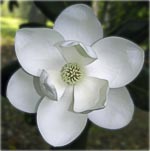Mount Alexander – Yemassee – Beaufort County
Basic Information
- Location – Combahee River, Yemassee, Prince William Parish, ACE Basin, Beaufort County
Original property located south of Yemassee off River Road
- Origin of name – ?
- Other names – Jenkins Camp, Warrens
- Current status – Part of Auldbrass Plantation which is privately owned
Timeline
- 1735 – Earliest known date of existence
The property was originally granted to Thomas Ferguson.
- 1743 – Alexander Moon owned the property at this time. According to a deed, Moon mortgaged 1,000 acres on the Combahee River called Mount Alexander (Linder, p. 349).
- 1757 – James Michie purchased the plantation from the estate of Alexander Moon.
- 1760 – James Michie died in London. It appears that his plantation went to his daughter Mary and her husband Charles Ogilvie, a British merchant. It is not known if they made their home on the plantation.
- 1777-1779 – Dr. Alexander Garden managed the plantation for the Ogilvies. It was during this time that estates belonging to Loyalists were confiscated during the American Revolution (Linder, p. 349).
- 1784 – Charles Ogilvie petitioned the South Carolina General Assembly for the return of the plantation. It was eventually returned to his sons, Charles Ogilvie and John Alexander Ogilvie. However, 499 acres had already been sold to Colonel William Harden, an American officer. He named his acreage Alexandria (Linder, p. 349).
The Mount Alexander portion of the plantation changed hands several times until it was bought by Colonel James Cuthbert. Cuthbert also purchased the Alexandria lands and restored Mount Alexander to its original acreage (Linder, p. 350).
Cuthbert died and the property passed to his son James Cuthbert, Jr.
- 1852 – James Cuthbert, Jr. died and his estate was sold to John White Gregorie on March 16, 1853.
- 1853 – Mount Alexander was sold to Dr. William J. Jenkins.
- 1866 – Jenkins lost the plantation when he failed to pay the mortgage. The mortgage was held by the children of Charles C. Gregorie. The Gregorie heirs held onto the property until 1900 (Linder, p. 351).
- 1900 – The property was sold to Sanders Glover. Within ten days, Glover had sold the timber rights to Charleston Lumber Company and the land to James U. Jackson. (Linder, p. 351).
Jackson had already purchased other tracts of land which he now combined in order to market the timber and form a hunt club.
- 1903 – Jackson gave 1,000 acres to the Combahee Hunting Club. The rest of the acreage changed hands numerous times among various timber companies (Linder, p. 424).
- 1910 – The Combahee Hunting Club sold the 1,000 acres to J.R. Paschall and Thomas Gresham. The property changed hands several times before it was owned by C. Leigh Stevens.
- 1938 – C. Leigh Stevens reorganized the Savannah River Lumber Company, and as a fee for his services the company gave him several tracts of land. C. Leigh Stevens combined Old Brass (formerly Mount Pleasant), Mount Alexander, Charlton, Richfield, and Old Combahee to form a large piece of property. He then commissioned Frank Lloyd Wright to build a plantation complex that represented a working farm. Frank Lloyd Wright is given credit for naming the complex Auldbrass (Linder, p. 425).
- 1962 – C. Leigh Stevens died and left the plantation to his son and daughter. Jessica Stevens Loring bought out her brother and was the sole owner of Auldbrass.
- 1979 – Jessica Stevens Loring sold Auldbrass. At some point a hunt club owned the plantation and used the house as a lodge.
- 1987 – The Beaufort County Open Land Trust acquired the property and sold it to Joel Silver with the agreement that it would be open for tours on occasion. The buildings had been neglected for some time and were in poor shape. Silver began to restore the buildings. He still owns Auldbrass today. For more detailed info on the plantation complex created by Frank Lloyd Wright, please see Auldbrass Plantation.
Land
- Number of acres – 1,000 in 1743; 1,000 in 1903
- Primary crop – Rice
Owners
- Alphabetical list – Beaufort County Open Land Trust; Combahee Hunting Club; Colonel James Cuthbert; James Cuthbert, Jr.; Thomas Ferguson; Sanders Glover; John White Gregorie; James U. Jackson; Dr. William J. Jenkins; Jessica Stevens Loring; James Michie; Alexander Moon; Charles and Mary Ogilvie; Charles and John Alexander Ogilvie; J.R. Paschall and Thomas Gresham; Joel Silver; C. Leigh Stevens; William B. Warren
Slaves
- Number of slaves – ?
Buildings
Web Resources
Print Resources
- Suzanne Cameron Linder, Historical Atlas of the Rice Plantations of the ACE River Basin - 1860
(Columbia, SC: South Carolina Department of Archives and History, 1995)
 Order Historical Atlas of the Rice Plantations of the ACE River Basin - 1860
Order Historical Atlas of the Rice Plantations of the ACE River Basin - 1860
Contact Information
- Beaufort County Open Land Trust
PO Box 75
Beaufort, SC 29901
Telephone: 843-521-2175
Website: Click here


